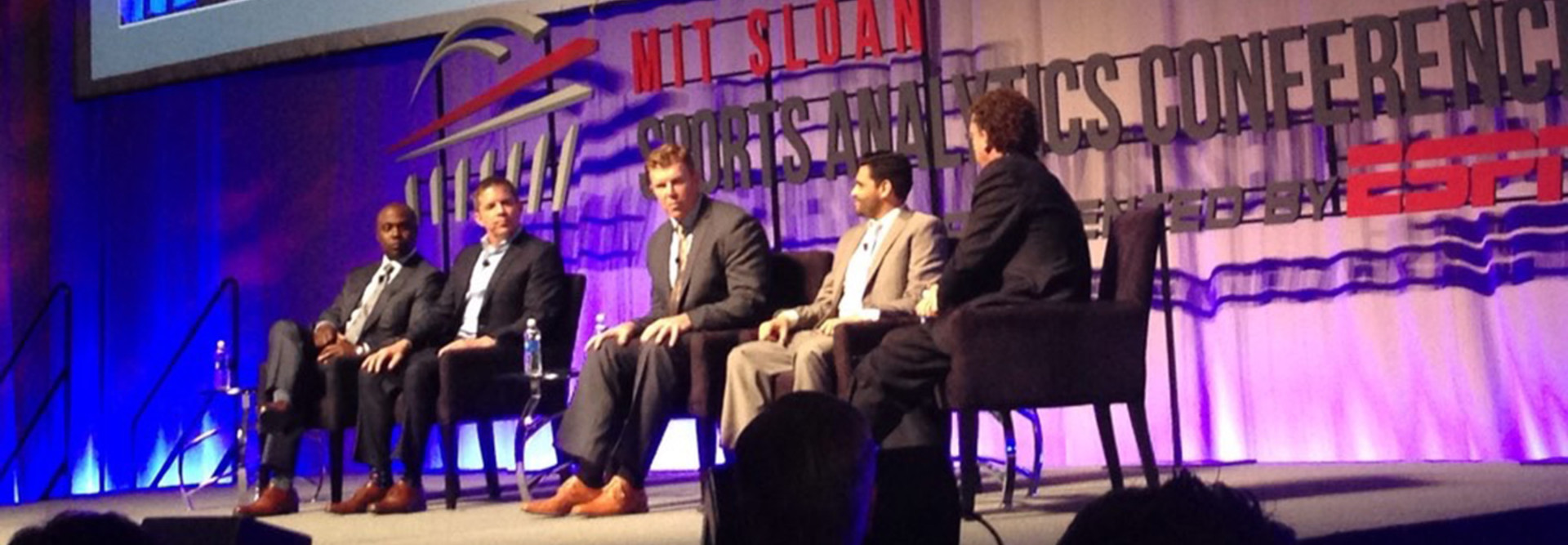Wearable Technology Could Help NFL Prevent Injuries and Extend Careers
When Cleveland Browns wide receiver Andrew Hawkins and his teammates heard the NFL was going to have every player in the league wear RFID tags in their uniforms, they were skeptical.
In the NFL, routines are sacred and players are image-conscious. But Hawkins' fears were quelled when he saw that the Zebra Technologies tags were placed inconspicuously in his shoulder pads. And more importantly, his coaching staff convinced him of the tags' value.
“At first, we didn’t really understand what it was,” Hawkins said while speaking on a panel at the 2015 MIT Sloan Sports Analytics Conference. “Our strength coach, Paul Ricci, did a great job explaining the benefits.”
When it comes to wearable technology and player tracking in the NFL, the league can seize upon numerous opportunities. But first and foremost is the potential for data gathered from wearable technology to prevent injuries.
With the Zebra tags implemented, NFL coaching staffs can specifically see how much wear and tear the players’ bodies are taking. That helps coaches know when to ease up on players to avoid injury.
“With wearable tech, being in tune with your body is now in a data form,” Hawkins said. “I remember feeling like I was getting pounded in practice, and [the player tracking] confirmed what I was feeling.” As a result, the coaching staff eased up on Hawkins’ workload to ensure that his body had ample time to fully recover, he said.
Data Is Setting a New Baseline for Football
The gold standard for scouting NFL talent comes from the league’s scouting combine, a weeklong showcase that takes place in Indianapolis every February. The combine consists of a series of standard drills and routines that NFL hopefuls must perform to impress NFL teams.
But many of those tests are based on historical data that may no longer reflect the reality of today’s game.
“I think our generation of athletes will be kind of known as the baseline athlete for data,” Hawkins said. “[In the future,] we’ll have a whole new set of numbers, and it’ll be precise.”
The 40-yard dash in particular seems ripe for adjustment.
“The only reason they run the 40-yard dash is because they have x amount of years to go off of that data,” Hawkins said.
That statement was echoed in another panel at the conference by NFL Director of Football Development Matt Birk.
“We run the 40-yard dash in Indianapolis. Why? The only reason anyone can ever give you is, that's how it's always been done,” he said.
The league plans on thoroughly evaluating the data gathered from its first year of using Zebra Technologies’ player-tracking solution to see if any changes in the combine drills are warranted, Birk said.
The Hope and the Dream for Sports Analytics
When it comes to sports analytics in professional football, there are two camps: those who eye the application of such technology with a glass-half-empty mentality and those who fall into the glass-half-full crowd.
Former NFL player and current pro football analyst Marshall Faulk is definitely a data devotee. He even predicts that a data-driven coaching model will give players a longer shelf life.
“I believe it’s going to extend careers,” Faulk said. “I feel like a lot of my great plays, a lot of my talents were used up in practice. Not in games.”
Others involved with the game, like NFL Vice President of Media Strategy and Business Development Vishal Shah, believe data will help everyone run a tighter ship.
“[Data analytics] enables the league and the clubs to be much more data-driven,” he said. “It’s the old adage, ‘you can’t manage what you don’t measure.’”
But for some of the players, the whirlwind of gadgets, software and data visualization in the NFL still seems a bit surreal.
“It’s like you’re playing PlayStation, being able to check players' stamina [and] speed,” Hawkins said.









